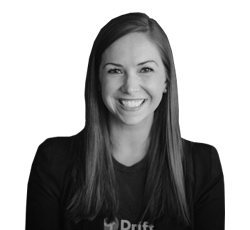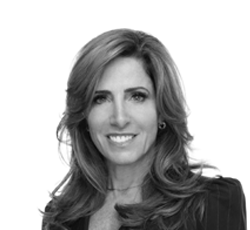Engagement is not always a clear prediction of retention
Sonciary Pérez
|
Co-Founder
of
Quala


Sonciary Pérez


Episode Summary
Today on the show we have Sonciary Pérez , co-founder of Quala.
In this episode, Sonciary explains what exactly is Frontline Intelligence, and how Quala helps Customer Success practitioners to be seen as customer intelligence leaders that help drive growth within an organization.
We also discussed what you need to look out for when building a Customer Success team from the get-go, why Quala’s Product Marketing team strategically comes from Sales and Customer Experience, and finally shares why their highly engaged customers at Promoboxx churned.
Mentioned Resources
Transcription
[00:01:26] Andrew Michael: Hey, Sonciary how's it go.
[00:01:28] Sonciary: It's gone. Thank you so much for having me today.
[00:01:30] Andrew Michael: It's a pleasure for the listeners. Sonciary is the co-founder of Quala. The only customer success platform powered by frontline intelligence, Quala uniquely combines intelligence from frontline teams with customer data for better workflows. Sonciary has started a career in marketing at CCA global partners before founding Promoboxx Sonciary is also an investor and advisor and serves as a mentor in residence at Techstars.
So my first question for you is. What is frontline intelligence?
[00:01:58] Sonciary: That's a great question. [00:02:00] So how we define frontline intelligence? Is anyone in the field interacting with customers day in and day? Most of our customers, our customer success teams. I, myself, of course, I've been in customer success for the last 12 years.
But really it's anyone, if you're a product manager talking to customers you're on the frontline. If you're in support, you're on the frontline. So that's how we look at it, but primarily we are working with customer success.
[00:02:25] Andrew Michael: Cool. And talk us through a little bit about stack what you currently do, Quala.
What is unique about the offering? Obviously I know, like on the show, we've interviewed a lot of different people, all serving the customer success space in different tools and services. So what is it that you do and how are you unique?
[00:02:41] Sonciary: Yeah, thanks for asking. So here at Quala, we believe that customer success teams are on the front lines, interacting with customers day in and day out.
We believe that they're the learning engine for scaling successful B2B SaaS companies. And we found the most successful companies have customer success teams that are in the trenches, and [00:03:00] they're accurately able to describe what they're seeing as a result of those interactions in a way that's distillable for leadership so they can make sound. Strategic decisions based on those interactions. So we see our mission as promoting CS within the org, as customer intelligence experts, so that they can help drive company strategy. And we do that in a really unique way. I'm happy to share a little bit more, but that's at its essence. What we're up to here at Quala?
[00:03:28] Andrew Michael: How are you doing.
[00:03:31] Sonciary: Sure. So the spidey senses that customer success teams might have around critical integration points that will help retain a certain set of customers, or maybe a pricing update that will help grow another set of customers. We essentially provide the data to back all of that up. So it's shared as fact base and not necessarily as opinion.
And we do this by pulling in call details, notes, emails, chats, et cetera, into one data stream. Then customer [00:04:00] success teams or leadership can mine that data stream for key areas of interest. Some questions that some of our customers ask Quala are, which of our customers are talking about our competitors, which competitors should we integrate with gong or chorus?
Our is having issues with our onboarding experience over. We essentially pull in all of the data that I mentioned so that these teams can create visualization dashboards around that data and then make sound recommendations. So again, think less opinions, more fact-based and it all realized or came to realization when us as serial founders, my co-founder and I.
Got together and realized that as a company grows, the more its leaders become disconnected from the frontline, from those having conversations with customers day in and day out. The more, it's harder to keep your ear to the ground. And it's difficult to leverage that really important intelligence that is the competitive edge.
That'll help you build a successful company. So we've built a mechanism essentially that allows our customers to understate. [00:05:00] Not only how their customers are using their products, but how they feel about how they're using their.
[00:05:05] Andrew Michael: Very cool. Yeah. I think it's super important. I was trying to actually remember, this was one of the from Reforge, if you familiar with the the courses and stuff, one of the, on the retention course, I can't remember what it's called, but it's the idea that with founders, as you mentioned, like as the product and the company evolves and grows, like you have.
Inherent bias as a founder to lean back on what you knew the customers are doing it, that certain points in time and in your head when an actual fact, like it can be further from the truth. And you, Amanda had so far off from where you originally were, that's your original insights are pretty much useless at some point.
So if you're not really like other yourself being super close to the customer, you need to be like relying on your team to make sure that they've unionized. As a founder, personally, my bias towards this, you should always be doing it's.
[00:05:46] Sonciary: That's a good point. We can get so myopic in our experiences.
And one of my favorite quotes is in the mind. Of the beginner, the possibilities are endless. And in the mind of the expert, there are few. So as we build our company [00:06:00] more and more the years and years go by, we see ourselves as experts. We understand what we're building. We have the vision, we understand our customers and we start to see, a narrowed pathway and that sort of focus can be incredibly powerful when you don't have a lot of resources at your disposal.
And not a lot of times focuses. Comes at a premium it's paramount, but the opposite of that, it is a double-edged sword where you see confirmation bias and you're just essentially seeing the customer base is what you believe it should be. I have been proven so many times by Quala our own product.
When I feel like I know we should do this thing. And then I essentially use our products to discover that customers are having different conversations. So it's been very helpful for me and for our team, of course, to, to use our product, to discover how to build our own.
[00:06:49] Andrew Michael: Absolutely. Yeah, it's definitely like always continuous.
You're challenging. Your own internal bias says is it's a skill that takes, I don't think you can never really be mastered, but it's always good to be conscious
[00:06:59] Sonciary: of. [00:07:00] We drink the Kool-Aid right. We have to have this blind belief in what we're building and we just press forward at any cost.
And again, in some areas that's such a powerful thing. And then other areas that can be towards.
[00:07:11] Andrew Michael: Absolutely. Cool. So obviously I mentioned the beginning of the intro that you started off your career in marketing, and then you've made the switch over, like, how did you make the transition?
What was the catalyst.
[00:07:24] Sonciary: Or at the decision was essentially forced, but in a good way. And I've had this wonderful career in CS and I've learned so much, it's been amazing to be in a field that still feels nascent that's growing. I feel like I've been here since the beginning and to see it grow and see such an interest in CS today is really, it's a very cool.
To be a part of, we have a really tight community of CSMs or practitioners and leaders. And for me, when I was building my second company or the company before Quala called Promoboxx, you mentioned we're a marketing technology platform. [00:08:00] I had intended to lead our, go to market efforts, specifically marketing, and then we signed our very first customer Chevrolet.
For their Superbowl campaign in 2012. And we were faced with this fact that we had sold a product that was very early, that wasn't exactly an early stage founders, understand this founding teams understand this. It was a product that wasn't fully realized just yet. So we needed someone at the time and then we got.
That myself and my role into a whole team of people. But at that time we needed someone to be the product to essentially operate as the product, until we were able to build one that our customer could log in and experience and build campaigns themselves. So I remember my co-founder and CEO of Coldwell.
We're sitting, we're having the conversation and realizing this, and we're both like pointing at each other, like who should do this work? And he's you should do this work. And I'm like, oh my gosh, but I'm a marketer. I'm not a customer service person or customer [00:09:00] support. And in the end we just, you have to do what you have to do.
And I ended up loving that role. I mentioned earlier, I've been able to apply some marketing principles to CS and it's been, my journey for the last 12 years now. So I'm hugely. Thank you. Chevrolet
[00:09:13] Andrew Michael: explained to me a little bit what that must've been like as well. I'm going like with your marketing mindset coming into customer success like that, it's one initial thing that you did and you believe you did really well. And what is one big mistake that you made, like going into it from a first time a perspective?
[00:09:30] Sonciary: Yeah. Oh, I love this question. So I think the first thing that we did really is that. We held so closely to our customers. We worked so closely with them and I mentioned customers, but at the time in the very beginning was just Chevrolet. And for a young company, just beginning, you only have your rep reputation and you need your early customers and your team members to be a source or a Bullhorn for the cause to tell other people that they've loved working with you and in the midst of [00:10:00] not having a product.
That, we felt was fully operational. It was important that we sold our team and our technology as the product. And I feel like we did that really well. So we include. Tech and team as product. And then we also worked so closely with them day in and day out. We were able to do that because they're essentially an enterprise level customer.
But honestly, even if they were small that would have been important. It's it was a catalyst for how we decided to grow our offering was as a result of their timely feedback. And they became partners alongside us. We jokingly named some of our features after. Connections and context at Chevrolet, we brought them in a part of the process and we were able to create an environment where they felt like they were building the technology alongside us.
And that was a wonderful experience to go to. And on the other side, of course at the risk of saying anything good that you do can be a double-edged sword. Of course, when you spend that much, when you're that close to the customer, they expect [00:11:00] that day in and day out year in and year out.
Essentially for the rest of your time together. And they're still adjusting. Of Promoboxx today. But at the risk of, being a little bit too duplicative in my answer, I will say something that we didn't do very well was that because we built a customer success team from the very beginning, and I would recommend that any company thinks about building this frontline infrastructure from the get-go Leverage that team to a degree where they would actually cover over some of the inherent product gaps and issues that we had in a way that can be detrimental.
So when you invite a team in to be part of the product and that team is. Bridging the gap between what you have and don't have they can give you an edge in the market, but if you're not able to quickly iterate from a product perspective and you don't continue to listen to your customers, keep your ear to the ground.
You will start to build or start to fall back on a product that the gap widens and widens as the customer success team continues to fill that gap. So I would [00:12:00] recommend to leaders build these teams from the get-go, but iterate very quickly from a product perspective. And please listen to them.
They have key insights and a competitive edge on how to build your technology from a product excuse me, from a customer acceptance aspect.
[00:12:16] Andrew Michael: It was very interesting. And I think just thinking through as well, you're talking that in the beginning, saying, okay, we have this big customer now I'm doing marketing.
I need to switch to customer success. What did that look like as well? Did you just like drop marketing side and just purely focused on CS? Did you start building a team and parallel and let me start there and then I have a few other follow-up questions.
[00:12:39] Sonciary: Sure. So for any early stage founders out there, I think you, we well know that so many things happen in parallel.
Even if you deputize a new role. And I think, okay, now I'm focused on customer success. The reality of the fact is that you are really all things to all people, and that can be difficult, which is why focus is so important. But yet you have to hold to that [00:13:00] focus loosely. I think the key or the magic to why.
Relatively well at Promoboxx, is that my co-founders and I had very clear swim lanes, even though I was bifurcated between customer success and marketing, my co-founder and CEO is very clearly operations and big picture selling. And then we had a technical co-founder that was very clearly a UX, wizard.
And then we'll add another technical co-founder that was very clearly engineering. And so we all knew what our little fiefdoms and what our swim lanes were, which helped us focus. Even if within that swim lane, there was a lot going on. So for me, I still helped manage the, our website, our social properties.
I did begin to harness an amazing, we call our island of misfit toy consultants. They were best in breed individuals that helped us with, PPC and different components. And I was able to what the strategy should look like, but not necessarily be in the trenches, building those strategies.
And [00:14:00] the majority of my work then moved to CS. I would say that I was probably 15% in the marketing bucket and the rest was in customer success because I saw. Having happy customers as our most powerful marketing tactic, if we could build amazing experiences and then just give them easy ways to talk about those experiences, that essentially is the marketing that we would need to power through the first few years.
And that's what we were able.
[00:14:28] Andrew Michael: Yeah, absolutely. I can't remember where I read this as well. I think it's definitely from a VC, but I'm not sure who it is now. I think it's essentially it was basically that at some point at any given point lifespan of a SaaS business, if you're doing really well, at least 40% of new business comes from with.
And it comes from like those happy customers from those connections. And I definitely see like where you're coming from in terms of the best marketing you can do, just happy customers talking about your product and going out there. From that side, the one thing I'm interested in as well as like in, depends on where I'm like on the [00:15:00] top of customers and the segments you're going after.
So I think typically if your businesses predominantly SMB and you're a sort of low touch tech touch business, Quite a lot of overlap between marketing and customer success in terms of the functions like lifestyle co-marketing and onboarding and these sorts of things that they share similarities, because they're very much tech side they're driven by email and this sort of thing, in your case, did you see any like good overlaps between the two where you would have sort of skill sets that you would maybe it would have been used within marketing, but it would also like became very valuable and the customer success side. Is there anything specific that you see from that side?
[00:15:37] Sonciary: Yeah. I think it's such a good point. I love what we're now noticing or what we've. I feel like I've started hearing maybe two issues ago is the customer marketing manager or customer marketing strategist. And I feel like it's incredibly smart to look at your wide breadth of customer work and then decide how to turn that into [00:16:00] marketing in a way that.
The narrative as close to your customers, the vernacular as such that your customers are using and the language makes sense. So I love that here at Quala, we are already building our product marketing team. And so we're pretty early. And the product marketing team is coming from Sales and CS, and we're doing that strategically as a way to, again, keep the same vernacular and stay close to the customer.
We know exactly how to talk to them and they feel like we understand them. So I think that it's very powerful to recruit within the customer success team and to other teams because they take that intelligence with them and can use that to help create great fodder from a marketing perspective and help build or I should say make strategic decisions that are helpful to the customer base.
[00:16:49] Andrew Michael: Yeah, it's very interesting doing that internal recruiting. I definitely see as all where you come from in terms of from a product marketers perspective, like nobody knows the voice of customer better than people speaking to the customers [00:17:00] continuously. So coming in with that domain expertise and having that existing history is all within the company can be very powerful.
Especially when like working on things like copy and positioning
[00:17:09] Sonciary: I think just to interject here, it is difficult for leaders within the company to decide how much of their time effort is going to be focused on the vision that they have for what they're building. And what's, future-proofing the.
And what should be allocated towards what customers are asking for today. That's either bridging the gap for what they sold versus what they offer, or just general maintenance on growing with the community that they're serving. And it can be really difficult to make those decisions of what's. What's going to be focused on vision and what's going to be focused on where my customers are driving us.
So hopefully, here at Quala, we're building something that helps. Focus their time and efforts. So they know what are those big hits that are going to be meaningful within their business so that they can still allocate a significant [00:18:00] amount of their times to the vision that they're creating with this exciting new offering that their.
[00:18:05] Andrew Michael: For sure. And it's always like a slippery slope of going to everyone once harvest. Yeah. Cool. So I'm interested as well then, like maybe other at Promoboxx or now at Quala, like when it comes to churn and retention yourself do you have any sort of interesting story that you could share with us?
Anything like where you've seen churn, like really effectively handled or.
[00:18:28] Sonciary: Yeah, sure. The escalation experience I think, is so near and dear to many of our hearts. And I think it's managed very closely by leaders within the business. As far as interesting churn stories for me, it was the realization and it was the realization of how much, especially working with enterprise level customers, the relationship impact.
How our customers feel about the work that we do with them and their products that they're being provided. And again, [00:19:00] for those of us that working with named accounts and to be clear at Promoboxx and at Quala, we work with teams that are enterprise focused, and we also work with the long tail SMB as well.
So I understand the double sided marketplace. I understand what it's like for named accounts and for tech touch, smaller accounts. The churn experience that I've had in the past, for instance, at Promoboxx, we churned a customer very large Volkswagen, and they were a loved customer of ours. They.
Had amazing engagement rates, as far as you should goes on our platform, they were doing so well. This actually happened in automotive twice to us. And we were, we had a fair amount of automotive brands that we worked with. And in certain industries, particularly again with enterprise level customers, there's a lot of politicking that's happening in the background.
And a lot of your ability to retain a customer is based on that relationship and not just based on the tech. So even though they were using our products, they loved it. They were seeing amazing engagement rates. They churned they actually launched a [00:20:00] campaign on our product the day before they turned and it was such a blow to our team.
It was so frustrating. We looked back, we did our due diligence. We're interviewing everyone, deciding and an exit strategy. What happened here? How do we take this forward into the next to the next cycle? And discovered that even though they were again using our products and services and how they felt about that usage was not good.
They felt like it actually took them too long to get done what they needed to do, even though they dedicated the time. And they felt like our pricing was debilitating for their marketing budget. We didn't realize, but it had at the time taken up 90% of their budget, their marketing budget.
This was specifically with a certain. Group dealing with their dealership base. I want to
[00:20:46] Andrew Michael: clarify,
[00:20:46] Sonciary: let me clarify. Was it was a specific sector of the marketing budget. With their us team. It was a result of those conversations that we realized, okay, how do we quantify the relationship and the value that they're experiencing [00:21:00] alongside and marry that with usage. And then, deployed a team that was focused on marrying the relationship component with the usage component so that we could understand from qualitative and from a qualitative and quantitative perspective.
Customers that looked like Volkswagen moving forward. That was a tough lesson to learn. I think many of us in CS sometimes just out of pure I guess simplification try to index on one certain group of metrics. Sometimes that's, indexing on usage just as a proxy, but in reality it's a lot more than just usage that keeps the custoner..
[00:21:37] Andrew Michael: Yeah, for sure. And sometimes, like you said, the metrics can also be deceiving in their own, right. In the sense that you can see, somebody looks extremely engaged, but maybe it's just, they're not understanding what they need to be doing in the product, or they just finding something incredibly frustrating.
Is definitely something we talk about a lot as well, like the relationships and churn risk when it comes to churn. I think it's probably top three reasons for churn, a lack of [00:22:00] listening to the show and all the. Is that the relationship risk, especially like when your customer champion churns, or you don't have the right person within the organization.
And like you say, there's a lot of politics going on. If you don't have that, like real champion for your business internally, who's the one at the end of the day fighting to get like on the budgets and get things approved and things like that. It becomes a huge risk for churn and retention at the end of the day.
Awesome. I'm going to ask you a question to ask every guest that joins us. Let's imagine a hypothetical scenario that you join a new company general. Churn and retention are not doing good at this company. And the CEO comes to and says we really need to turn things around. We have three months to do it.
You're in charge. What is it? But there's a catch. The catch is that you're not going to tell me I'm going to go and speak to customers, figuring out what the biggest pain point is and start with that. That's what everyone would do. You're just going to pick something that you've seen being effective in the past and run blindly with it, hoping that it's going to work at this company.
[00:23:00] What would that one thing.
[00:23:02] Sonciary: My goodness. I feel like I have an answer that you won't like because it's akin to the unacceptable one. My, my actual thought was that I would talk to those in the trenches. I feel like there is a wealth of knowledge. We know there's a wealth of intelligence for those that are the ones talking to customers.
And a lot of times cause it's difficult to get that extract that data out and really normalize it across CSMs. We sometimes bypass that data source. So the first thing I would do is actually have customer. Conversations with CSMs and ask them how they feel about customers, where are they seeing risk in the business?
And what do they think should be the top three things that we do, you know, out of the first 90 days of this experience. So is that a out, is that still akin to your customer?
Let me try to, let me try to dream up something else. Then the other thing that I would recommend is to document the customer life cycle or the customer experience. I it's another proxy for attempting to [00:24:00] get close to customers. If conversations are off limits let's say with customers and with CSMs they're off limits.
The, what I would do is actually take a look at what is the typical customer journey. And how does our product fail or not fail them within that journey and then decide from there, what are the specific areas that we could optimize around based on the holes and you don't, you can do that without customer input.
You can actually do that with just product teams, because product teams are also really aware of where those gaps are too. So documenting the customer life cycle. I like to do that at least once a quarter. Because there's always fresh insights as a result of what we think the journey is versus what it actually is.
[00:24:43] Andrew Michael: That's very interesting exercise, I think differently to do. And sure. I'm pretty sure, like you uncovered quite a lot of things as you go through it just really empathizing and putting yourself in your customer's shoes as well is something that's needs to be done continuously. Yeah. Cool. Last question then what's [00:25:00] one thing that, you know today about churn and retention that you wish you knew when you got started with your career.
[00:25:08] Sonciary: I don't know the retention that I wish I would have known. So I think my offering here would be that many of us spend way too much time trying to save deals that are already lost the amount of emotional energy effort and time that goes into. Attempting to rescue or rehabilitate a customer that essentially has already made a decision can be debilitating on not only executive teams, but also those in the trenches, the CSMs themselves.
I now give myself and the team permission to recognize when we haven't delivered or on a promise that we wanted to, or when a customer just wasn't a good fit to amicable. Part ways [00:26:00] and even help them find a vendor that will serve their needs. I save a lot of time and effort just making that call and having a conversation, a nice amicable conversation, and then moving on and focusing on the best customers that are using the technology and loving it and turning those experiences and to.
Experiences that can help other customers do better. Maybe the ones that are in the middle that are slightly yellow. So that's what I would say in my early career, I spent a lot of time trying to rehabilitate lost customers and it was very difficult and I wish I would have reallocated that time to ones that were doing well and seeing how I could build other ones up into our best custom.
[00:26:42] Andrew Michael: Yeah, that makes a lot of sense. And I think it's something that it comes with experience, like really feeling that pain, trying to save the unsavable and then said, like losing your time and energy when it could be better spent elsewhere. Cool. Is there any final thoughts you want to leave the listeners with?
Is there anything they should be aware of from your work or before us? [00:27:00]
[00:27:01] Sonciary: I would say I would love to chat with anyone that's interested. You can find me on LinkedIn /Sonciary. I'm happy to send the URL and you can look it up in show notes or sonciary@qoala.io. I know it's a bit of a beast to spell it.
S O N C I A R Y. And I know we're getting closer to the end of the year, so I would say good luck and have fun to everyone out there. I know this can be a incredibly I guess a time where we're all just in the trenches, trying to get everything done. So I hope that everyone takes a little bit of time to, to relax and restore and just get ready for 2022.
I think it's going to be an exciting year for all of us.
[00:27:41] Andrew Michael: Absolutely. Yeah, definitely. We'll make sure to add all of that in the show notes for listeners. If you're listening, you can check that out as well. And just thanks so much for joining today sonciary. I was just chatting to and wish you best of luck now going into the new year.
[00:27:53] Sonciary: Thank you so much, Andrew. You too. Thanks for having me.
[00:27:55] Andrew Michael: Cheers. Bye.
Comments


Sonciary Pérez

A new episode every week
We’ll send you one episode every Wednesday from a subscription economy pro with insights to help you grow.
About
The show

My name is Andrew Michael and I started CHURN.FM, as I was tired of hearing stories about some magical silver bullet that solved churn for company X.
In this podcast, you will hear from founders and subscription economy pros working in product, marketing, customer success, support, and operations roles across different stages of company growth, who are taking a systematic approach to increase retention and engagement within their organizations.
























































































.png)


































.png)









































































